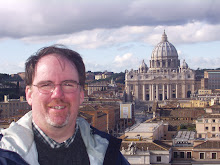
Blessed Cecilia, appear in visions
To all musicians, appear and inspire:
Translated Daughter, come down and startle
Composing mortals with immortal fire. W. H. Auden (1907-73)
November 22 is the annual day to honor Saint Cecilia, patron saint of musicians and sacred music. Unfortunately, this will not be celebrated liturgically this year, but we can still remember and feast in honor of this holy saint!
Saint Cecilia lived in the second or third century in Rome. As with many early Christian saints there is relatively little known about her life. It is thought that she came from a noble Roman family and that she was given in marriage, against her will, to a non-Christian named Valerian. After evangelizing Valerian and his brother, the two were baptized and were soon martyred. While trying to bury their bodies, Cecilia was captured and condemned to death. According to legend, her persecutors first tried to kill her by suffocating her with steam, but that failed. They eventually cut her throat with an axe. Legends say that she still sang a hymn of praise to God as she lingered on for three days.
Devotion to St. Cecilia began quickly thereafter (she is one of the women mentioned in the Roman Canon). She had founded a house-church, and Pope Paschal I erected a church above her house in the Trastevere region of Rome in the ninth century. Her body, along with her husband and his brother and another man martyred with them were exhumed from the catecombs and were buried in the church.
The photo above is of one of my favorite pieces of art. Stefano Maderno (1576-1636) carved this emotional portrayal of the saint after her body was moved in 1599 to its current place under the main altar. This is how her incorrupt body was found lying before it was moved. The axe marks were visible in her neck and her arm was outstretched with three fingers extended (which was, of course, explained as a testimony to her faith in the Triune God). While at first glance the statue is graceful and flowing, a longer examination reveals the awkwardness of her position. Carved into the floor in front of the altar is this statement:
Behold the body of the most holy virgin Cecilia,
whom I myself saw lying incorrupt in the tomb.
I have in this marble expressed for you the same saint
in the very same posture.
A nice description of the church is available by clicking here.
While there is absolutely no evidence supporting it, legend claims that St. Cecilia invented the organ. In honor of the Saint I thought that you might appreciate the clip below--the last two movements of Handel's Ode for Saint Cecilia's Day, HWV 76, led by the great Baroque interpreter Ton Koopman.
But bright Cecilia raised the wonder higher:
When to her Organ vocal breath was given
An Angel heard, and straight appeared
–Mistaking Earth for Heaven.

Fantastic Clip. Thanks!
ReplyDeleteI had the blessing of uttering a prayer at the place where St. Cecilia's body had been laid to rest first - at the crypts of St. Callistus - I touched the marble figure of her - a profound experience for me. Thanks Pat for this post! Simply awesome :-)
ReplyDelete